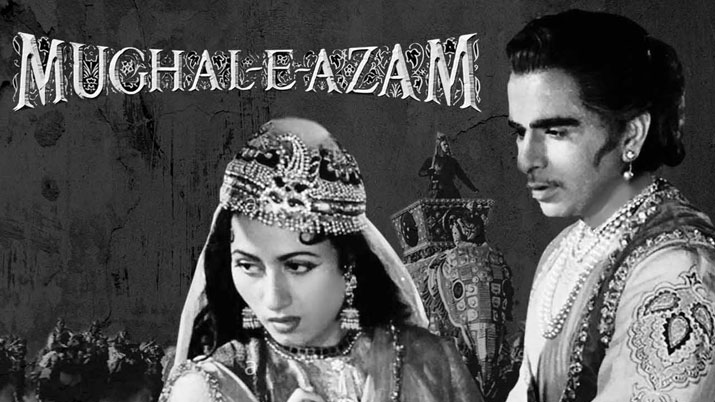Hardly there exists a part of this vast population who hasn’t come across or is absolutely clueless about ‘Pyaar Kiya Toh Darna Kya’. The desi-version of Romeo-Juliet and one of the most tragic love story which ever existed and is still embedded in the minds and hearts of millions is none other than the 1960’s Indian epic historical drama film directed by K. Asif and produced by Shapoorji Pallonji, ‘Mughal-E-Azam’, where the late legendary actor, Dilip Kumar played prince Salim and the forever gorgeous Madhubala played the fabled character of Anarkali. Based on a long-lived legend, the story however, propounds the existence of Anarkali as one of the books from the chronicles of Akbar states that in 1615 a marble tomb was built on Anarkali’s grave in Lahore by Salim, when he had become Emperor Jehangir.
Upon its release, fans stood in queues to watch it and almost the entire industry lined up for the premiere. Celebrities like Raj Kapoor, Waheeda Rehman, and many others too rushed over to popular Mumbai theatre Maratha Mandir to watch this iconic costliest Hindi movie ever made. Actor Raj Kapoor, and his wife Krishna arrived from Berlin for the premiere. Shammi Kapoor, Geeta Bali, Waheeda, Suraiyya, Rajendra Kumar, Guru Dutt, Dev Anand with his wife Kalpana, Lata Mangeshkar and Mala Sinha and a few others too were present at the movie premiere. At the time of its release in 1960, the film had an all-India release in 150 theatres simultaneously.
Later in 2004, a digitally-colourised version of the epic was re-released in theatres bringing out the beautiful colours of the places it was shot in, especially the classic song of a rebel in love, ‘Pyaar Kiya Toh Darna Kya’, and the shots of Sheesh Mahal. As it completed 60 years of the release last year, the screenplay of Mughal-E-Azam was included in the library at Oscars
The movie will always be remembered for its extraordinary staging and best paired cast on the silver screen, as of today, this cult classic gem turned 61 and here are a few lesser known facts about the movie. The timeless eternal romance between the star-cast gave butterflies to the mass, yet there always lies a huge difference between the reel life and the real life. The star cast was cherished and well received by everyone as the cast was rumored to have a sparkling ongoing chemistry between them.
Dilip Kumar in his autobiography wrote, Dilip Kumar: The Substance and the Shadow. “The announcement of our pairing in Mughal-e-Azam made sensational news in the early 1950s because of the rumours about our emotional involvement. In fact, K Asif was ecstatic with the wide publicity and trade enquiries he got from the announcement,” he wrote.
Since Mughal-e-Azam took years to shoot because of its expansive sets and production design, things were drastically different between the lead pair by the time they shot the famed feather scene. Dilip Kumar and Madhubala “had completely stopped even greeting each other” when they shot for the scene that is now remembered as one of the most romantic scenes in Hindi cinema’s history. For shooting this successfully, he gave credit to their professional attitude who respected the director’s vision. “It should, in all fairness, go down in the annals of film history as a tribute to the artistry of two professionally committed actors who kept aside personal differences and fulfilled the director’s vision of a sensitive, arresting and sensuous screen moment to perfection,” he wrote.
The couple was tore apart because of Madhubala’s father Ataullah Khan who wasn’t opposed to their match but instead, wanted to turn this marriage into a business venture which did not land well with Dilip Kumar. Madhubala’s father had his own production company and wanted to bring in the two stars under his roof but Dilip was not in favour of this idea.
Well, other than this, ironically, the original choice for playing Anarkali wasn’t Madhubala. Director K Asif actually began shooting another version of Mughal-e-Azam with Nargis in the lead. But that was scrapped and a new version of the eternal tale was started in 1950. The film took nearly ten years to complete, and at several points of the shooting K Asif thought of abandoning the film.
Moreover, Dilip Kumar was most reluctant to play Salim. “The heavy costume, the ornaments, the wig and the shooting in the intense heat of Rajasthan was all very daunting to me,” said Dilip Kumar once. Though, due to the differences between him and the director Dilip Kumar did not attend the movie’s lavish premiere at Maratha Mandir.


